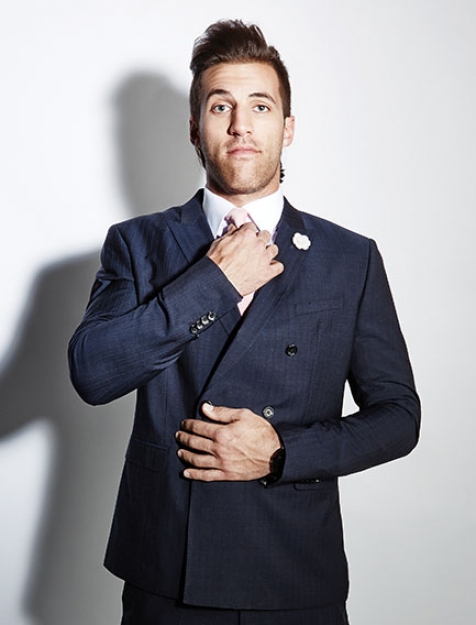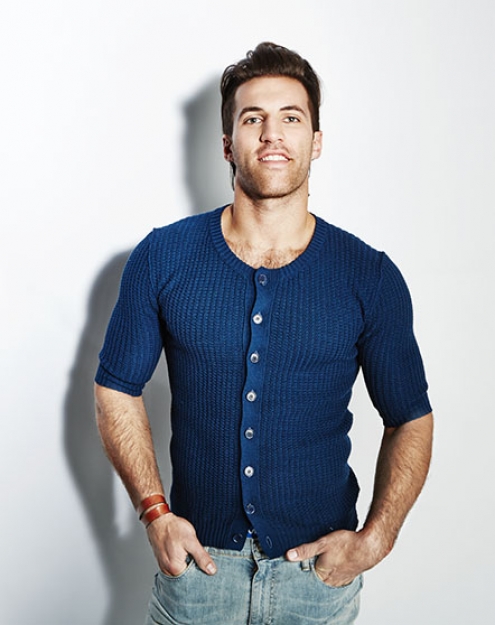The true history of lacrosse will likely never be written. As the sport evolved in Native American culture over centuries there were very few existing accounts of how the sport was played, its strategy, even its rules. In the 21st century, America’s oldest team sport may also be the fastest growing sport in the US. And thanks to players like Paul Rabil, that history is being rewritten every day.
Through Rabil grew up in Maryland, his family was from Winston Salem, NC. “That’s basketball country,” he says, “so basketball was in my blood. But once I discovered lacrosse, I loved everything about it. It was a team sport, but there was physicality to it. And there was also an individual aspect to the game. Every stick is different. Everyone strings their own pockets. You could express yourself while playing a team game and accomplish team goals. It was different than anything else I played.”
As a freshman in a large public high school with over 3,500 kids, Rabil made the varsity team as a starter. As a sophomore, he transferred to Dematha High School, long famous for its basketball and football program. It was there that he became noticed on a national level.
“I grew up with Chapel Hill fans, so going to North Carolina seemed like a no brainer for me. But Coach (Dave) Pietramala at Johns Hopkins was an amazing recruiter. A lot of coaches will call and ask about your goals, but you could sit on the phone with Coach Pietramala for an hour-and-a-half. It was amazing. To this day, had he not been such a great recruiter, I would have committed earlier to an ACC school. I felt I owed it to him to visit Hopkins. Once I made my visit, my mind was made up- the history of the program, the championships, the way the players and coaches handled themselves. There was no contest.”
Rabil led Johns Hopkins to two NCAA championships. Upon graduation, he thought about his future. “I was taking internships in commercial real estate, marketing, finance- trying to broaden my understanding of different markets in the corporate world. Guys would play lacrosse professionally for a few years, and then they would excel through the strong lacrosse networks on Wall Street. When I was drafted to the Boston Cannons in Major League Lacrosse and was presented with opportunities, my passion grew so high that I wanted to try and pursue a full-time career in the sport. I didn’t know if it was gong to be coaching, running camps and clinics, developing equipment. Whatever it was, I was going to try everything from there and build my own brand and put together a professional lacrosse career.”
Rabil feels he owes his gratitude not only to the great players that paved the way before him, but to come of age at a time when social media began to thrive. “I’ve been fortunate enough to be part of the wave of technology and social media,” he says. “Before me, pro lacrosse players were prisoners to national ad campaigns and whether or not a non-endemic sponsor would include them in it. When I was in college, YouTube began to develop. You could see highlights almost instantly. Then Twitter, Facebook, Instagram.
For someone with an entrepreneurial mindset like a lot of the guys in lacrosse have, it was an incredible opportunity. It gave fans a chance to connect with us. There’s no substitute for engagement with your fans, not only to promote your product on the field, but what you’re doing off it. It sets off a trail that’s attractive for the sports and the youth that are playing the game. A lot of kids that play lacrosse are well educated and passionate about the sport. We’re in a truly unique situation as pro lacrosse players.”
Currently, sponsors such as Warrior, which creates lacrosse apparel and equipment, and Red Bull have gravitated to Rabil and his influence in the sport. That level of sponsorship has helped Rabil fulfill his dream of being a true full-time pro athlete. But the dream doesn’t stop there.
“I’m excited to grow as an athlete,” he says, “but to be part of the overall growth of the sport, to see guys getting drafted taking the opportunity to do lacrosse full-time, the more guys do that, the competition grows. The competitive space is more attractive to non-traditional fans and sponsors. Competition drives the marketplace. There were people before me that paved the way; hopefully I can






